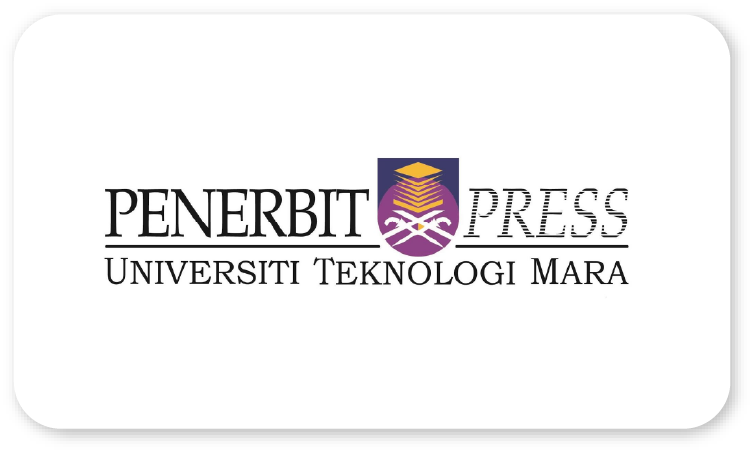
The influence of brand slogan-sponsored event congruity on brand trust: The mediating role of attitude towards sponsorship
Noraziah Mohd Amin
Academy of Language Studies, Universiti Teknologi MARA,, Cawangan Pulau Pinang, 13500 Permatang Pauh, Pulau Pinang, Malaysia
Nursafwah Tugiman
School of Multimedia Technology and Communication, College of Arts and Sciences, Universiti Utara Malaysia, 06100 Sintok, Kedah, Malaysia
Mohamad Noor Salehhuddin Sharipudin
Faculty of Modern Languages and communication, Universiti Putra Malaysia, 43400 UPM Serdang, Selangor Darul Ehsan, Malaysia
Abstract
Despite the prevalent practice of sponsorship globally, there is currently little academic research on the relationship between brand slogans and sponsored events, and how this association impacts consumers’ brand trust indirectly through their attitude towards sponsorship. The present research investigates this issue by employing the theory of congruity in an experimental study involving 330 consumer participants. This study aims to achieve the following objectives: 1) To investigate if brand slogan-sponsored event perceived congruity (BSSEC) impacts consumers’ attitude towards sponsorship (ATS); 2) To examine if BSSEC influences consumers’ brand trust (BT); and 3) To explore to what extent consumers’ ATS mediates BT. To obtain the answers, a one-way ANOVA was performed, and the results demonstrated that the higher the consumers’ BSSEC, the more positive their ATS. Besides, the data was also analysed using Hayes’s PROCESS Macro Model 4 and it was discovered that the total effect model for BT was statistically significant, with an F-value of 122.2529 and a p-value of .000, accounting for 27.15% of the variation in BT. The significant overall impact of BSSEC on BT, considering both direct and indirect paths, indicates that the effect of BSSEC on BT is partially mediated by consumers’ ATS. The data apparently highlights the significance of aligning brand messages with sponsored events to improve perceived congruence and, therefore, produce more favourable sentiments from consumers, ultimately impacting brand trust. Thus, marketers should select a brand slogan that reflects the brand’s core values and resonates with the target audience while ensuring the sponsored event aligns with the slogan’s message, theme, and emotional appeal to create a seamless and authentic brand-event connection.
Keywords:Brand slogan-sponsored event congruity, attitude towards sponsorship, brand trust
DOI: h10.24191/ejssh.v9i1.5691
References:
Aaker, D. A., & Moorman, C. (2023). Strategic market management (strategic market managment) (12th ed). New Jersey, USA: John Wiley & Sons, Inc.
Aguiló-Lemoine, À. E., Rejón-Guardia, F., & García-Sastre, M. A. (2020). Congruence effects on the effectiveness of sponsorship of sport event websites: An experimental approach. Sustainability, 12(19), 8173.
Aissa, S. A. H., & Matar, A. (2016). The impact of sport sponsorship on brand value: Evidence from Algeria. Business and Economic Research, 6(1), 363. https://doi.org/10.5296/ber.v6i1.9453
Andrade, C. (2021). The inconvenient truth about convenience and purposive samples. Indian Journal of Psychological Medicine, 43(1), 86-88.
Barve, Y. D. (2023). Assessing the Impacts of Digital Marketing and Sponsorship on the Football Industry as a Business and Their Implications on Fan Engagement (Doctoral dissertation, Dublin, National College of Ireland).
Becker-Olsen, K. L., & Hill, R. P. (2006). The impact of sponsor fit on brand equity: The case of nonprofit service providers. Journal of Service Research, 9(1), 73–83. https://doi.org/10.1177/1094670506289532
Boshoff, C., & Gerber, C. (2008). Sponsorship recall and recognition: The case of the 2007 Cricket World Cup. South African Journal of Business Management, 39(2), 1–8. doi:10.4102/sajbm.v39i2.556
Brasel, S. A., & Gips, J. (2011). Red Bull “Gives You Wings” for better or worse: A double-edged impact of brand exposure on consumer performance. Journal of Consumer Psychology, 21(1), 57–64. doi:10.1016/j.jcps.2010.09.008
Carrillat, F. A., Solomon, P. J., & d’Astous, A. (2015). Brand stereotyping and image transfer in concurrent sponsorships. Journal of Advertising, 44(4), 300–314. doi:10.1080/00913367.2015.1083916
Chaudhuri, A., & Holbrook, M. B. (2001). The chain of effects from brand trust and brand affect to brand performance: The role of brand loyalty. Journal of Marketing, 65(2), 81–93. https://doi.org/10.1509/jmkg.65.2.81.18255
Conway, D. (2022). Whose lifestyle matters at Johannesburg Pride? The lifestylisation of LGBTQ+ identities and the gentrification of activism. Sociology, 56(1), 148-165.
Coppetti, C., Wentzel, D., Tomczak, T., & Henkel, S. (2009). Improving incongruent sponsorships through articulation of the sponsorship and audience participation. Journal of Marketing Communications, 1, 18. https://doi.org/10.1080/13527260802012788
Cornwell, T. B., D. P. Roy, & E. A. Steinard. (2001). Exploring managers’ perceptions of the impact of sponsorship on brand equity. Journal of Advertising, 30, 2 (2001): 41–51.
Crano, W. D., Brewer, M. B., & Lac, A. (2023). Principles and methods of social research (4th ed). New York, US: Routledge.
Doyle, C. (2014). The real thing? the language of advertising slogans. http://blog.oxforddictionaries.com/2011/10/language-of-advertising-slogans/
Fleck, N. D., & Quester, P. (2007). Birds of a feather flock together…definition, role and measure of congruence: An application to sponsorship. Psychology & Marketing, 24(11), 975–1000. https://doi.org/10.1002/mar.20192
Geuens, M., & De Pelsmacker, P. (2017). Planning and conducting experimental advertising research and questionnaire design. Journal of Advertising, 46(1), 83-100.
Govers, R. (2013). Why place branding is not about logos and slogans. Place Branding and Public Diplomacy, 9(2), 71–75. doi:10.1057/pb.2013.11
Hendriks, H., Wilmsen, D., van Dalen, W., & Gebhardt, W. A. (2020). Picture me drinking: Alcohol-related posts by Instagram influencers popular among adolescents and young adults. Frontiers in Psychology, 1 January 2020, Volume 10, Article 2991.
Huang, G. (2020). Does warm glow promote physical activity? Examining the relative effectiveness of self-benefiting versus other-benefiting incentives in motivating fitness app use by corporate sponsorship programs. Health Communication, 1–12. doi:10.1080/10410236.2020.1794548
Jagre, E., Watson, J. J., & Watson, J. G. (2001). Sponsorship and congruity theory: A theoretical framework for explaining consumer attitude and recall of event sponsorship. Advances in Consumer Research, 28, 439–445.
Johan, M. R. M., Syed, M., Azalanshah, M., & Mohd Adnan, H. (2022). Building brand identity through social media platform during Covid-19 pandemic. Jurnal Intelek, 17(1), 151-163.
Khuong, M. N, & Chau, N. T. K. (2017). Factors of Event Sponsorship Affecting Customer’s Brand Trust and Word of Mouth-A Case of Toyota, Vietnam. Journal of Economics, Business and Management, 5(2), 88-94.
Kim, Y., & Choi, S. M. (2022). When bad becomes good: The role of congruence and product type in the CSR initiatives of stigmatized industries. Sustainability, 14(13), 8164.
Kohli, C., Leuthesser, L., & Suri, R. (2007). Got slogan? Guidelines for creating effective slogans. Business Horizons, 50, 415–422. https://doi.org/10.1016/j.bushor.2007.05.002
Lamichhane, Y. R. (2021). Rhetorical culture and brand slogan: An analysis of the slogans of all commercial banks from Nepal. Journal of Nepalese Business Studies, 14(1), 40-53.
Lee, L. W., Hannah, D., & McCarthy, I. P. (2020). Do your employees think your slogan is “fake news?” A framework for understanding the impact of fake company slogans on employees. Journal of Product & Brand Management, 29(2), 199-208.
Lehto, X. Y., Lee, G., & Ismail, J. (2014). Measuring congruence of affective images of destinations and their slogans. International Journal of Tourism Research, 16(3), 250–260. doi:10.1002/jtr.1923
Liu, G., & Jiang, M. (2017). Impact mechanism study between sport sponsorship fit degree and brand trust. In Proceedings of the Tenth International Conference on Management Science and Engineering Management (pp. 1413-1426). Springer Singapore.
Mason, R. B., & Cochetel, F. (2006). Residual Brand Awareness Following the Termination of a Long‐term Event Sponsorship and the Appointment of a New Sponsor. Journal of Marketing Communications, 12(2), 125–144. doi:10.1080/13527260600630450
Mazodier, M., & Quester, P. (2014). The role of sponsorship fit for changing brand affect: A latent growth modeling approach. International Journal of Research in Marketing, 31. https://doi.org/10.1016/j.ijresmar.2013.08.004
McDonnell, I., & Moir, M. (2014). Event Sponsorship (1st ed). New York, USA: Routledge.
Moharana, T. R., Roy Bhattacharjee, D., Pradhan, D., & Kuanr, A. (2023). What drives sponsorship effectiveness? An examination of the roles of brand community identification, brand authenticity, and sponsor–club congruence. Psychology & Marketing, 40(6), 1211-1236.
Mulcahy, K. V. (2003). Entrepreneurship or Cultural Darwinism? Privatization and American Cultural Patronage. The Journal of Arts Management, Law, and Society, 33(3), 165–184. doi:10.1080/10632920309597344
Musté, P., Stuart, K., & Trelis, A. (2015). Linguistic Choice in a Corpus of Brand Slogans: Repetition or Variation. Procedia- Social and Behavioral Sciences, 198, 350–358. https://doi.org/10.1016/j.sbspro.2015.07.454
Olson, E. L. (2010). Does Sponsorship Work in the Same Way in Different Sponsorship Contexts? European Journal of Marketing, 44, 1–2 (2010): 180–199.
Olson, E. L., & Thjømøe, H. M. (2011). Explaining and articulating the fit construct in sponsorship. Journal of Advertising, 40(1), 57-70.
Pan, P. L., & Phua, J. (2021). Connecting sponsor brands through sports competitions: an identity approach to brand trust and brand loyalty. Sport, Business and Management: An International Journal, 11(2), 164-184.
Parvizi, G. R., Shafipour, M., & Mashayekh, J. (2016). An examination of the errors committed by Iranian MA students in their translation of advertisement slogans based on Keshavarz’s taxonomy of errors. Cross-Cultural Communication, 12(12), 1-13.
Pfeuffer, A., & Huh, J. (2020). Effects of different sponsorship disclosure message types on consumers’ trust and attitudes. International Journal of Advertising, 40(1), 49-80.
Purves, R. I., Critchlow, N., Morgan, A., Stead, M., & Dobbie, F. (2020). Examining the frequency and nature of gambling marketing in televised broadcasts of professional sporting events in the United Kingdom. Public Health, 184, 71-78.
Qu, Y., Cao, L., & Xu, F. (2021). Design of an attention-grabbing destination slogan using the attenuation model. Journal of Destination Marketing & Management, 19, 100415.
Quintal, V., Liu, M. T., Unsal, F., & Phau, I. (2020). The persuasion process of sponsorship and nonsponsorship activation and the dual mediation model. Event Management, 24(2-3), 235-252.
Rahman, D. M. S. (2021). Unruly puppets: Producing the urban poor in a Bangladeshi television idol competition. International Journal of Asia-Pacific Studies, 17(2).
Rosengren, S., & Dahlén, M. (2006). Brand–Slogan Matching in a Cluttered Environment. Journal of Marketing Communications, 12(4), 263–279. https://doi.org/10.1080/13527260600714700
Roy, D. P., & Graeff, T. R. (2003). Influences on consumer responses to Winter Olympics sponsorship. International Journal of Sports Marketing and Sponsorship, 4(4), 67-87.
Shin, H., Lee, H., & Perdue, R. R. (2018). The congruity effects of commercial brand sponsorship in a regional event. Tourism Management, 67, 168–179. https://doi.org/10.1016/j.tourman.2018.01.016
Speed, R., & Thompson, P. (2000). Determinants of sports sponsorship response. Journal of the Academy of Marketing Science, 28. https://doi.org/10.1177/0092070300282004
Tosun, P. (2020). Brand trust for digital-only bank brands: consumer insights from an emerging market. In ATLAS 7th International Conference on Social Sciences. ATLAS.
Trendel, O., & Warlop, L. (2007). Positive implicit memory effects for event incongruent sponsorship. Advances in Consumer Research, 34, 102. https://doi.org/43008804
Wakefield, L., Wakefield, K., & Keller, K. L. (2020). Understanding sponsorship: A consumer-centric model of sponsorship effects. Journal of Advertising, 49:3, 320-343, DOI: 10.1080/00913367.2020.1751011
Weeks, C. S., Cornwell, T. B., & Drennan, J. C. (2008). Leveraging sponsorships on the Internet: Activation, congruence, and articulation. Psychology & Marketing, 25(7), 637–654. https://doi.org/10.1002/mar.20229
Xu, Z., Cao, Y., & Matsuoka, H. (2024). The effects of different billboard advertisement language on TV sports audiences’ recognition, recall and search intention of the sponsor signage. Asia Pacific Journal of Marketing and Logistics, Vol. ahead-of-print No. ahead-of-print.
Yuan, S., Huo, C., & Malik, T. (2019). The negative spillover effect in sports sponsorship: An experiment examining the impact of team performance on sponsor’s brand trust. International Journal of Sports Marketing and Sponsorship, 20(3), 477–494. https://doi.org/10.1108/IJSMS-01-2018-0003



